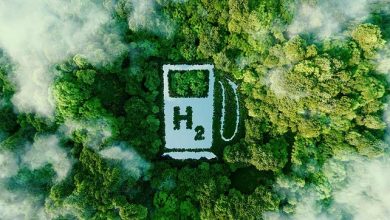The Indian EV ride – Journey, Speed Breakers & Destination

64 Years, for telephone it took 64 years to reach 40% Market penetration, while Mobile phones did the same in just 10 years. This simple fact indicates the high pace product/technology adoption (or Rejection) in current world. While looking at this fact it makes us wonder, how Indian Electric vehicle looks like?

Source – Rogers, E. (1962) Diffusion of innovations. Free Press,
London, NY, USA.
Image – 1 demonstrate the Rogers’s Product adoption curve, while looking at the total EV volumes of 2019-20 which is 1.14% of total market(Including 90,000 E-rickshaw). It directly indicates that Indian EV adoption is at the nascent stage of Product adoption curve i.e. Innovators. It raises some serious question on the practicality of Government’s various notification in past couple of years aiming to radically transform the Two & Three wheeler markets till 2030.


Comparison with Total sales for 2019-20
Source – SIAM – Society of Indian Automobile Manufactures
Let’s us try to dissect the problem into small parts and look at the market Volume wise. Image -2 (a) demonstrate the India automotive market is dominated by Two wheeler sales which accounts about 81%, Passenger cars are 13% of the total share. Category wise electric vehicle sales distribution is showed in image 2(b). As we can see the front runners of the EV adoption are Two and Three wheeler including E-Rickshaw.
If we try to look at the historic Projection reports dated from 2015-2017 shared by various government and Private Institutions we are nowhere near the projected volumes for 2020.
The numbers indicates that for the Electric vehicles to become next Smartphone in terms of product adoptions, the fundamental problems of all the stakeholders are to be understood and taken care of. Four major stakeholders on Indian EV ecosystem are mentioned in Image 3.

- Original Equipment Manufacturers (OEMs)
All the countries where EV adoption is at very advanced stage, it’s because of the initial push mechanism by OEMs and Government USA, Norway and China to cite a few. Let’s try to understand few fundamental problems from OEM perspective, some of them are India specific, which are stopping Indian OEM to strategies like the OEMs of China or USA.
- Though due to elimination of the Engine in EVs the BOM is reduced by 40% to 60% lesser components, the higher cost of Cells and Imported Electrical components results into high BOM cost compared to ICE Vehicles.
- Currently all the electric vehicles being sold in India have a cost premium ranging from 30% to 80 % compared to ICE vehicles however the customers are not ready to pay the premium. This leads to lower (or Negative) profitability in the EV business model for OEMs which results into lack of interest in product development and aggressive EV strategy.
- As a part of transition from BS –IV to BS- VI, all the OEMs have invested heavily in the Tooling’s and other investments, the cost of which will be amortized over next 5-10 years. To produce cost competitive (Compared to Ice), indigenous EV products demands high investments. This high investment and lack of visibility to recover the investments is emerging out to be a big hurdle to go all out for Electric vehicles.
- The most fundamental attribute of any business model is sales volumes, the sales volumes as well as the projections of various reports are not very encouraging or sufficient enough for OEMs to divert aggressive R&D and strategy teams’ effort into EV domain.
- Charging infrastructure (Fast charging/Battery Swapping/Opportunity charging) business models are far from profitability in the near future, while having a charging infra looks inevitable to gain the Initial volumes. This puts OEMs into a very difficult position while drafting charging strategy.
- Challenges of Value chain Partners –The value chain of automotive industry comprises of three main support systems i.e. Domestic components manufacturing industry, after sales service and dealership. Let’s try to deep dive into the problems faced by these pillars of industry.
Domestic Component Manufacturing –
- 50% of the revenue of the auto component industry is accrued from engine manufacturing. The impact on the Tier-2/Tier-3 suppliers which are making components for engines will be very high resulting into shutting down and loss of jobs.
- The paradigm shift from combustion engine to battery, motor, controller, and charger will challenge the highly evolved Indian auto component industry, which is not competent as well comfortable with moving to semiconductor industry,
- The Chinese component industry is far more attractive for electric vehicle manufacturers for bringing down the comparative costs of EVs. The electronics component (Capacitors, resistors etc.) in India as evolved as Chinese market most of the components to make even a simple PCB are imported. If the child parts are expensive than India cannot compete on Assembly level cost with imported electronics components.
After Sales Service
- An electric vehicle has 80% lesser moving parts inside as compared to an ICE. This significantly brings down the need for maintenance and the corresponding costs for the user. The huge after unauthorized service industry, which caters to demand for auto parts and servicing of ICE vehicles may not be needed at current scale.
- Another important factor while servicing the EVs is the higher number of electronics and software involved in the EVs, for which it is very easy for OEMs to keep as a trade secret, for example if the unauthorized service centers will not have access to the software flashing to Motor controller, they will not be able to service the EVs.
- There is a massive re-skilling required for this informal sector to adapt to serving electric vehicles along with ICEs. Acquiring those skills will take a good amount of time and all the personal involved in this industry may not be able to may not be competent enough to learn these skills.
Dealerships
- High Investment demands by the OEMs at the dealership level for branding/ differentiating the EVs sales channels to make it an attractive consumer experience. We can see lot of experience centers etc. are offered by EV OEMs across the country.
- There is a massive re-skilling required in the auto retail industry to be able to sell and improve the market penetration of electric vehicles, which will demand investments from the dealers.
- Challenge for the customers –For a customer an Electric vehicle is just vehicle which is taking customer from Place A to Place B, consumers does not care if the technology is ICE or EV. As Michel Le Boeuf said “A satisfied customer is best business strategy of all”, the EV adoption will not reach to the “Chasm” unless the overall value proposition is attractive enough.
- The range anxiety is one of most talked about topic in EV domain in India, Image -4 demonstrates about the Chinese Two wheeler EV industry, which is considered as a success story. The industry which has 90% Lead acid battery which provides a range of 50 at best. Then why the Indian consumers have range anxiety ?, one possible answer to this question is that in china around 240 million scooter have average use of 10 – 15 Km per day and customers have realised the true uses patterns while in India we want to have 120 Km range even though the average uses in 20-30 Kms only.

The customers should not pay the Premium of the cost, just because of the EV technology is expensive, as the value proposition of ICE is much better in 4/5 years, compared to the TCO of BEV due to the Battery replacement.
- Lack of the Quality option is another big barrier for customers, as the number of Quality EV offerings by OEMs in front of customers is very less for both Personal and commercial segments.
4. Challenge for Government –
Government has approved Phase-II of FAME Scheme with an outlay of Rs. 10,000 Crore for a period of 3 years commencing from 1st April 2019. The initiative is encouraging though as a policy maker Indian government is behind than the Global benchmarked Countries. A high level glimpse of the comparison is mentioned in Image -5.

- The gap between the cost of ICE and EV vehicles is significantly high, even to make the cost equal to the ICE counterpart is let alone better than EVs via subsidy is very high.
- Installing the charging infrastructure to push the initial adoption alone by government is investment wise, is mindboggling. However the encouragement to OEMs and BaaS providers the policies are under place as the due to lack of uncertainty on which Infrastructure mechanism ( Fast charging, Battery Swapping etc.) will flourish in long term restrict the government to go all out for the Infra establishment.
- No proven policy framework or road exist as of now in the world, so Indian Government does not have any solid reference or benchmark to begin with the transformation. Just to give an example even today we do not have a Charger standard in place, because its unclear which way the world will move like CCS, CHAdeMO etc., despite we can see different country have highlighted their preference.
Way forward
As the challenges associated with each stakeholders are vast and its looks like a challenging transition to the EV. I will split the Indian EV transition into 3 Phases as demonstrated in Image -6. The first phase is governed by B2B use cases like Two wheeler / Three wheeler ride sharing, Three wheeler good movement etc., as the TCO parity kicks in at higher utilization levels. This transition we are witnessing right now and are quite visible by the 100000 E rickshaw sales, and 20% growth in EV Two wheeler sales.
Phase -2 will be led by Two wheeler personal mobility, Public transport like Buses and Four wheeler commercial uses. Personal Mobility Passenger car, Intercity Transport segment will act as late entrant and will flourish in Phase -3.

To acquire the Innovators and early adopters as fast as possible, four levers will play a Major roles which are mentioned in Image 7.

Battery Swapping – A Business model which enables the customers to exchange discharged batteries with charged batteries at some service cost. Though this model has been tried and failed at very large scale in Battery Place led Shai Agassi, however this can provide solution of higher upfront cost and Range anxiety.
Innovative Business Model – Innovative business Models like B2B partnerships & Franchise the BaaS will help the Dealer networks and lower investment for OEMs.The winner of Initial two phases will be decided on how open OEMs/Service Providers are to partnerships or innovative business models. Just to give example Tesla Model 3 Comes in 120 Buildable configurations.
Localization – Higher upfront cost and reliance on foreign supplier can be curbed by localization of Key EV components. Government should support the component manufacturing industry and Electronics assembly industry. This will enable the job creation and lower BOM costs as well.
Policy–As Subsidy are not a sustainable way to encourage adoption of new technology Government policy to ease out the Tax, Manufacturing and local up-skilling of the resources. A detail road map should be drafted after the FAME scheme.
As a conclusion I would say “The Indian EV ride Looks Bumpy, but it’s full of potential, opportunities and it’s a long road to the destination”.
Author:
Gaurav Dadheech is part of Hero Innovation cell, working on World’s First Class changing Electric Vehicle. He has experience of 3 years in Electric vehicle domain. Gaurav have Masters in Mechanical Engineering from BITS, Pilani. He has experience in Electric Vehicle Product development, Product Planning and Strategy.
Published in Telematics Wire




